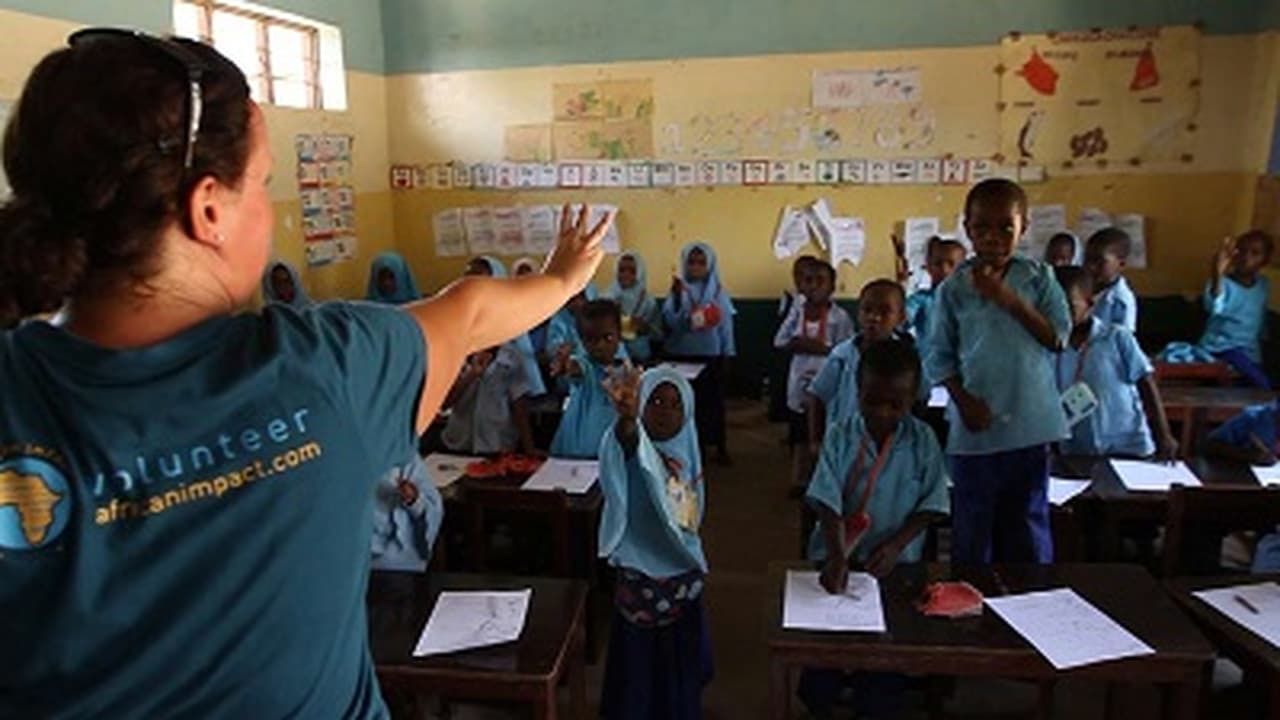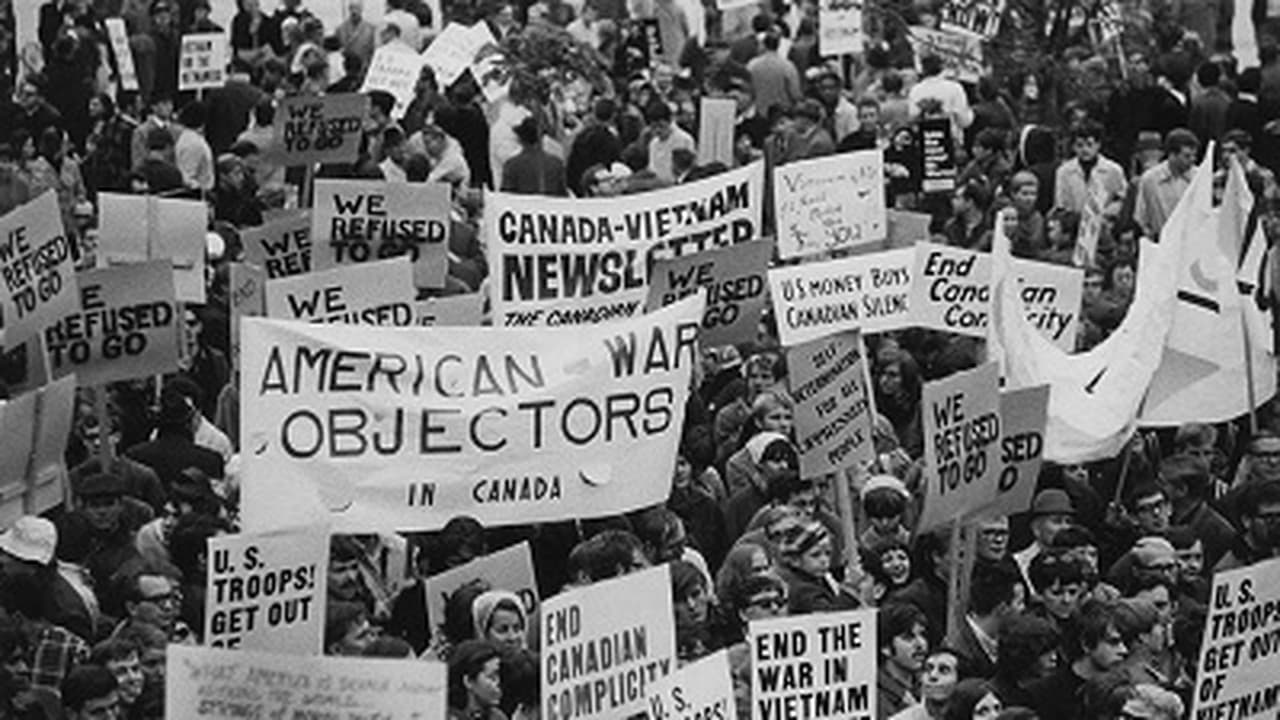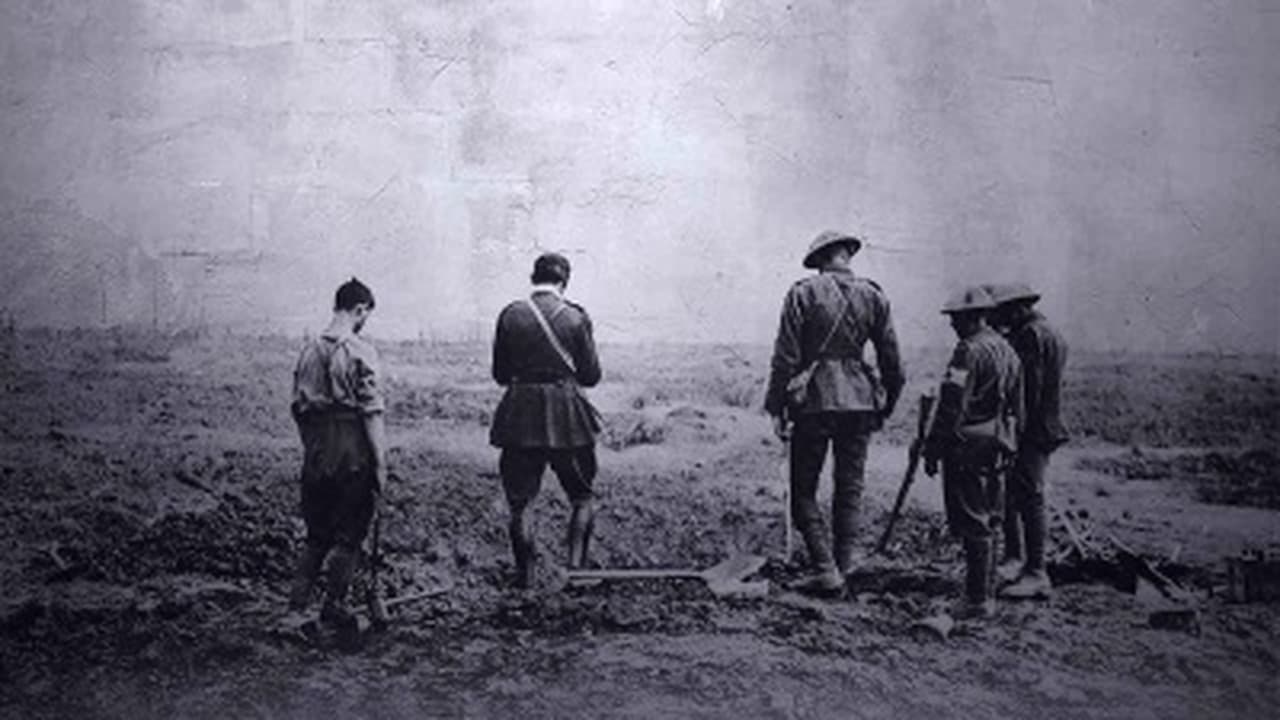Doc Zone
(2006)Streaming Episode Guide

Season 9
Volunteers Unleashed
Episode 15 - 4-02-2015


Vietnam: Canada’s Shadow War
Episode 14 - 3-26-2015


Deluged by Data
Episode 13 - 3-12-2015


Transforming Gender
Episode 12 - 2-26-2015


The Age of the Drone
Episode 11 - 2-19-2015


The Truth About Female Desire
Episode 10 - 2-12-2015


A TV Renaissance
Episode 9 - 1-29-2015


Roboticize Me
Episode 8 - 1-22-2015


Wild & Dangerous: The World of Exotic Pets
Episode 7 - 1-08-2015


The Psychopath Next Door
Episode 6 - 11-27-2014


DOT.CON
Episode 5 - 11-20-2014


Forgotten No More: The Lost Men of the 78th
Episode 4 - 11-06-2014


Weather Gone Wild
Episode 3 - 10-23-2014


Royals & Animals: Till Death Do Us Part
Episode 2 - 10-16-2014


The State of Incarceration
Episode 1 - 10-09-2014



Season 8
The Secret World of Gold
Episode 19 - 4-18-2014


Mystery of the Bell
Episode 18 - 4-10-2014


Mission Asteroid
Episode 17 - 4-03-2014


Angry Kids Stressed Out Parents
Episode 16 - 3-22-2014


Love Under Cuban Skies
Episode 15 - 3-20-2014


Defying Putin
Episode 14 - 1-30-2014


Officeland
Episode 13 - 1-23-2014


To The Rescue
Episode 12 - 1-16-2014


The Motherload
Episode 11 - 1-09-2014


Slaves to Habit
Episode 10 - 1-02-2014


Madiba: The Life and Times of Nelson Mandela
Episode 9 - 12-05-2013


How We Got Gay
Episode 8 - 11-28-2013


The Condo Game
Episode 7 - 11-21-2013


Bite Me: The Bed Bug Invasion
Episode 6 - 11-14-2013


Superstitious Minds
Episode 5 - 10-31-2013


Flying Solo
Episode 4 - 10-24-2013


NCR: Not Criminally Responsible
Episode 3 - 10-17-2013


Deadly by Design
Episode 2 - 10-10-2013


Zoo Revolution
Episode 1 - 10-03-2013



Season 7
Sibling Rivalry: Near, Dear and Dangerous
Episode 25 - 4-04-2013


Where Did I Put My Memory?
Episode 24 - 3-28-2013


Dog Dazed
Episode 23 - 3-21-2013


Twin Life: Sharing Mind and Body
Episode 22 - 3-13-2013


Ice, Sweat and Tears
Episode 21 - 3-07-2013


Boomer Revolution
Episode 20 - 2-28-2013


Syria: Behind Rebel Lines
Episode 19 - 2-21-2013


Mars & Venus Today
Episode 18 - 2-14-2013


Wind Rush
Episode 17 - 2-07-2013


Generation Jobless
Episode 16 - 1-31-2013


Why Men Cheat
Episode 15 - 1-24-2013


Serving the Royals: Inside the Firm
Episode 14 - 1-17-2013


Counterfeit Culture
Episode 13 - 1-10-2013


Supervolcano: Yellowstone's Fury
Episode 12 - 1-03-2013


Tales From KP
Episode 11 - 12-06-2012


Love, Hate & Propaganda III: War on Terror
Episode 10 - 11-29-2012


Faking the Grade
Episode 9 - 11-15-2012


Real Dirt on Gossip
Episode 8 - 11-08-2012


Anger In America: Fanning the Flames (Part 2)
Episode 7 - 10-25-2012


Anger in America: The Fire Within (Part 1)
Episode 6 - 10-18-2012


Hyper Parents & Coddled Kids
Episode 5 - 10-11-2012


War of 1812: Been There, Won That
Episode 4 - 10-04-2012


Eat, Cook, Love (Part 2)
Episode 3 - 9-27-2012


Eat, Cook, Love (Part 1)
Episode 2 - 9-20-2012


The New Green Giants
Episode 1 - 9-13-2012



Season 6
Titanic: The Canadian Story
Episode 27 - 4-05-2012


Scandal: Inside the Murdoch Empire
Episode 26 - 3-22-2012


The Age of Anxiety
Episode 25 - 3-15-2012


Conspiracy Rising
Episode 24 - 3-08-2012


Cat Crazed
Episode 23 - 3-01-2012


Sext up KIDS
Episode 22 - 2-23-2012


Who's Sorry Now?
Episode 21 - 2-16-2012


Life Below Zero
Episode 20 - 2-09-2012


8th Fire: At the Crossroads
Episode 19 - 2-02-2012


8th Fire: Whose Land Is It Anyway?
Episode 18 - 1-26-2012


8th Fire: It's Time
Episode 17 - 1-19-2012


8th Fire: Indigenious in the City
Episode 16 - 1-12-2012


Love, Hate & Propaganda: The Cold War #4
Episode 15 - 12-08-2011


Love, Hate & Propaganda: The Cold War #3
Episode 14 - 12-01-2011


Love, Hate & Propaganda: The Cold War #2
Episode 13 - 11-24-2011


Love, Hate & Propaganda: The Cold War #1
Episode 12 - 11-17-2011


Generation Boomerang
Episode 11 - 11-10-2011


1 Day
Episode 10 - 11-03-2011


Facebook Follies
Episode 9 - 10-27-2011


Conspiracy Rising
Episode 8 - 10-20-2011


Inside the Cirque
Episode 7 - 10-13-2011


Marketing the Monarchy
Episode 6 - 10-06-2011


The Trouble With Experts
Episode 5 - 9-29-2011


Life is a Highway (part 2)
Episode 4 - 9-22-2011


Life is a Highway
Episode 3 - 9-15-2011


My Life After 9/11
Episode 2 - 9-08-2011


In Search of the G Spot
Episode 1 - 9-22-2011



Season 5
Customer (Dis)Service
Episode 46 - 12-30-2011


1 Day
Episode 45 - 11-03-2011


Inside the Cirque
Episode 44 - 10-13-2011


Marketing the Monarchy
Episode 43 - 10-08-2011


The Trouble with Experts
Episode 42 - 9-29-2011


In Search of the G Spot
Episode 41 - 9-22-2011


Life is a Highway Part 2
Episode 40 - 9-22-2011


Life is a Highway
Episode 39 - 9-15-2011


My Life After 9/11
Episode 38 - 9-08-2011


Haiti's Orphans
Episode 37 - 8-04-2011


Love, Hate & Propaganda: The Cold War #4
Episode 36 - 12-08-2011


Love, Hate & Propaganda: The Cold War #3
Episode 35 - 12-01-2011


Facebook Follies
Episode 34 - 11-26-2011


Love, Hate & Propaganda: The Cold War #2
Episode 33 - 11-24-2011


Love, Hate & Propaganda: The Cold War #1
Episode 32 - 11-17-2011


Generation Boomerang
Episode 31 - 11-10-2011


Gardening Confidential
Episode 30 - 4-06-2011


Magical Mystery Cures
Episode 29 - 4-03-2011


The Gangster Next Door
Episode 28 - 3-24-2011


Famine and Shipwreck, An Irish Odyssey
Episode 27 - 3-17-2011


Inside Hana's Suitcase
Episode 25 - 3-06-2011


The F Word
Episode 24 - 3-03-2011


Remote Control War
Episode 23 - 2-24-2011


Abandon Ship: The Sinking of the SV Concordia
Episode 22 - 2-10-2011


End of Men
Episode 21 - 2-03-2011


Thoroughly Modern Marriage
Episode 20 - 1-20-2011


Cat Crazed
Episode 19 - 1-06-2011


Blowout: Is Canada Next?
Episode 18 - 12-09-2010


Apocalypse 2012
Episode 17 - 12-02-2010


Playing God with Planet Earth
Episode 16 - 11-25-2010


Are We Digital Dummies?
Episode 15 - 11-18-2010


We Will Remember Them
Episode 14 - 11-11-2010


Pet Pharm
Episode 13 - 11-04-2010


Africa on the Move: A Women's World
Episode 12 - 10-30-2010


Where Did I Put My Memory?
Episode 11 - 10-28-2010


Africa on the Move: The Modern Warrior
Episode 10 - 10-23-2010


Surviving the Future
Episode 9 - 10-21-2010


Africa on the Move: The Power of Song
Episode 8 - 10-16-2010


Twins Who Share a Brain
Episode 7 - 10-14-2010


Africa on the Move: A Dream of Millions
Episode 6 - 10-09-2010


Meltdown: After the Fall
Episode 5 - 9-30-2010


Meltdown: Paying the Price
Episode 4 - 9-23-2010


Queen Elizabeth in 3D
Episode 3 - 9-20-2010


Meltdown: A Global Tsunami
Episode 2 - 9-16-2010


Meltdown: The Men Who Crashed the World
Episode 1 - 9-09-2010



Season 4
Tasered
Episode 14 - 2-18-2010


Google World
Episode 13 - 2-11-2010


Hyper Parents and Coddled Kids
Episode 12 - 2-04-2010


CannaBiz
Episode 11 - 1-28-2010


Mounties Under Fire
Episode 10 - 1-21-2010


The Secret World of Shoplifting
Episode 9 - 12-03-2009


Carbon Hunters
Episode 8 - 11-26-2009


Up Against the Wall
Episode 7 - 11-19-2009


After Elizabeth II
Episode 6 - 11-12-2009


Berlin, 20 Years After
Episode 5 - 11-05-2009


Canada, Above and Beyond - Dancing with Danger
Episode 4 - 10-29-2009


Canada, Above and Beyond - Lifelines
Episode 3 - 10-22-2009


Canada, Above and Beyond - Conquering Geology
Episode 2 - 10-15-2009


Canada, Above and Beyond - First Flight
Episode 1 - 10-08-2009



Season 3
Dubai: Miracle or Mirage?
Episode 43 - 8-16-2008


Pedal Power
Episode 42 - 9-24-2009


Rise Up (2)
Episode 41 - 9-17-2009


Rise Up (1)
Episode 40 - 9-10-2009


Battle for a Continent
Episode 39 - 9-10-2009


The Spies Who Came From the Sea
Episode 38 - 8-20-2009


The Beat Goes On (2)
Episode 37 - 9-03-2009


The Beat Goes On (1)
Episode 36 - 8-27-2009


Malls R Us
Episode 35 - 8-20-2009


India Reborn: Mother India
Episode 34 - 8-13-2009


India Reborn: India on the Move
Episode 33 - 8-13-2009


India Reborn: Manufacturing Dreams
Episode 32 - 5-30-2009


India Reborn: Might and Myth
Episode 31 - 5-23-2009


This Can Happen to You
Episode 30 - 4-09-2009


Porndemic
Episode 29 - 4-02-2009


China's Earthquake
Episode 28 - 4-02-2009


Food of the Future
Episode 27 - 3-26-2009


24 Hours, 24 Million Meals: Feeding New York
Episode 26 - 3-26-2009


The Battle to Get on Your Plate
Episode 25 - 3-19-2009


The Great Food Revolution
Episode 24 - 3-19-2009


Wild Horse Redemption
Episode 23 - 3-12-2009


Shock Wave
Episode 22 - 3-05-2009


Bio-Dad
Episode 21 - 2-26-2009


Love Interrupted
Episode 20 - 2-12-2009


The Truth About Liars
Episode 19 - 2-05-2009


Battle for the Arctic
Episode 18 - 1-29-2009


Fly Me to the Moon
Episode 17 - 1-22-2009


Forever Plastic
Episode 16 - 1-15-2009


How To Divorce and Not Wreck the Kids
Episode 15 - 1-08-2009


Web Warriors
Episode 14 - 11-20-2008


The Sky's the Limit
Episode 13 - 11-13-2008


The Disappearing Male
Episode 12 - 11-08-2008


Mississipi Cold Case
Episode 11 - 11-02-2008


Rude: Where are Our Manners?
Episode 10 - 10-30-2008


The Bush Years
Episode 9 - 10-26-2008


Dolphin Dealer
Episode 8 - 10-23-2008


The U.S. vs Omar Khadr
Episode 7 - 10-16-2008


Mystery of Champlain
Episode 6 - 9-25-2008


The Museum (2)
Episode 5 - 9-18-2008


The Museum (1)
Episode 4 - 9-11-2008


Toxic Legacy
Episode 3 - 9-07-2008


The Girls of Summer
Episode 2 - 7-31-2008


Air India 182
Episode 1 - 6-22-2008



Season 2
Al Queda Code
Episode 20 - 4-03-2008


Cell Phone: The Ring Heard Around the World
Episode 19 - 4-03-2008


The Climb
Episode 18 - 3-27-2008


Tar Sands: The Selling of Alberta
Episode 17 - 3-13-2008


Winning for a Living
Episode 16 - 3-06-2008


Fidel Castro: A Life of Revolution
Episode 15 - 2-28-2008


How to be Happy
Episode 14 - 2-14-2008


The Battle of the Bag
Episode 13 - 1-31-2008


Pet Food: A Dog's Breakfast
Episode 12 - 1-24-2008


Desperately Seeking Doctors
Episode 11 - 1-17-2008


Polar Bear Fever
Episode 10 - 1-10-2008


The Pagan Christ
Episode 9 - 12-06-2007


Paris Hilton, Inc.
Episode 8 - 11-29-2007


Dubai: Miracle or Mirage?
Episode 7 - 11-22-2007


Hunting the Predators
Episode 6 - 11-15-2007


China's Sexual Revolution
Episode 5 - 11-08-2007


Canadaville, USA
Episode 4 - 11-01-2007


The Selling Game
Episode 3 - 10-25-2007


How to Stop a Hurricane
Episode 2 - 10-18-2007


Darfur: On Our Watch
Episode 1 - 10-11-2007



Season 1
Driving Dreams: Re-inventing The Wheel (2)
Episode 16 - 9-13-2007


Driving Dreams: Revolution on Wheels (1)
Episode 15 - 9-06-2007


Cracking Up
Episode 14 - 8-30-2007


The Battle for Baghdad
Episode 13 - 4-05-2007


Crazy Eights
Episode 12 - 3-29-2007


Virus Hunters
Episode 11 - 3-15-2007


Generation XXL
Episode 10 - 3-08-2007


In The Crossfire
Episode 9 - 3-01-2007


Embracing Bob's Killer
Episode 8 - 2-22-2007


Gamer Revolution (2)
Episode 7 - 2-08-2007


Gamer Revolution (1)
Episode 6 - 2-01-2007


13th Mission
Episode 5 - 11-09-2006


Ferry Command
Episode 4 - 11-02-2006


The Fifty Sixers
Episode 3 - 10-26-2006


Arctic Rush
Episode 2 - 10-19-2006


How the Kids Took Over
Episode 1 - 10-23-2006





